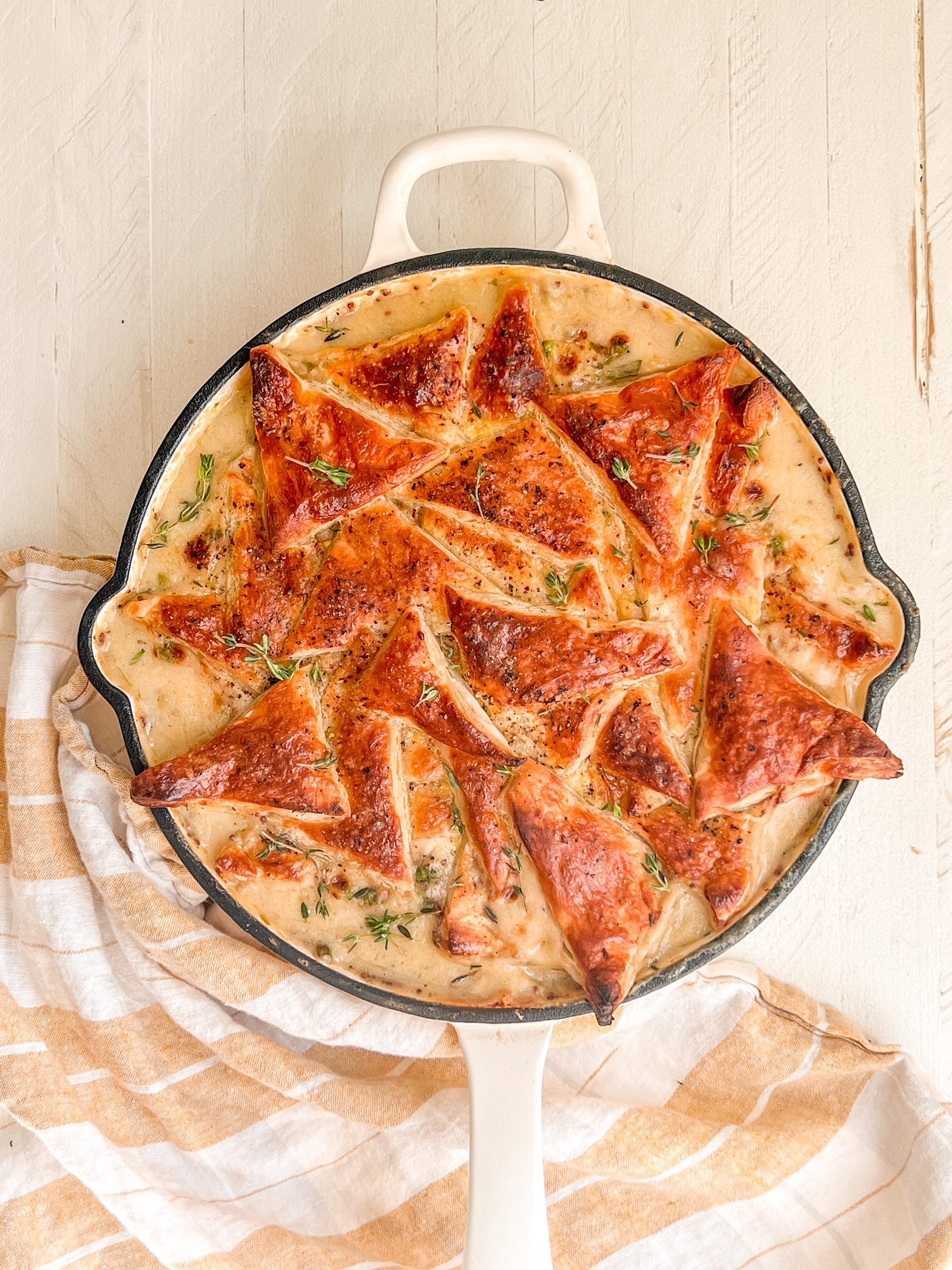
Springtime Vegetable Skillet Pot Pie
INGREDIENTS
- 2 tablespoons unsalted butter
- 2 tablespoons extra-virgin olive oil
- 4 medium carrots, halved lengthwise and cut into 1 ½-inch pieces
- 2 medium leeks, white and light green parts only, sliced and rinsed (about 2 ½ cups)
- 1 bunch of asparagus, ends trimmed and cut into 1 ½-inch pieces
- 1 ½ teaspoons kosher salt, divided
- ¼ cup all-purpose flour, plus more for work surface
- 3 cups vegetable stock
- 3 tablespoons heavy whipping cream
- 2 tablespoons crème fraîche
- 2 tablespoons whole-grain mustard
- 2 tablespoon fresh thyme leaves, divided
- 1/4 cup fresh parsley, roughly chopped
- 1 frozen puff pastry sheet (from 1 [17.3-oz.] package), thawed
- 1 large egg, lightly beaten
- 6 ounces fresh English peas
- 1 teaspoon flaky sea salt
INSTRUCTIONS
- Preheat oven to 400°F with rack in lower third position. Heat butter and oil in a 10-inch cast-iron skillet over medium-high until butter is melted and foamy. Add carrots, leeks, and ½ teaspoon of the kosher salt. Cook, stirring occasionally, until carrots are just beginning to soften and leeks are tender, 6 to 8 minutes. Add asparagus.
- Sprinkle evenly with flour. Cook, stirring constantly, until vegetables are fully coated and flour smells nutty and turns golden brown, about 1 minute. Add stock; bring to a boil over high. Reduce heat to medium-high. Cook, stirring occasionally, until liquid starts to thicken, about 3 minutes. Remove from heat; stir in whipping cream, crème fraîche, mustard, 1 tablespoon of the thyme, parlsey, and remaining 1 teaspoon kosher salt. Set aside to cool slightly, about 5 minutes.
- Meanwhile, roll pastry sheet out onto a lightly floured work surface into a 12-inch square. Cut evenly into 3 (4-inch-wide) strips. Cut each strip evenly into 6 triangles. Stir together egg and 1 tablespoon water in a small bowl.
- Stir peas into warm vegetable mixture in skillet. Arrange pastry triangles in a concentric-circle pattern over mixture, leaving a slight (about ½-inch) overhang around skillet edges and slightly overlapping triangles (some vegetable mixture will still be exposed around edges). Brush pastry with egg mixture; sprinkle with flaky sea salt.
- Place a baking sheet lined with aluminum foil on oven rack; place skillet on sheet. Bake in preheated oven until pastry is golden brown and filling is bubbly around edges, about 30 minutes. Remove from oven; let stand 10 minutes. Sprinkle with remaining 1 teaspoon thyme.
